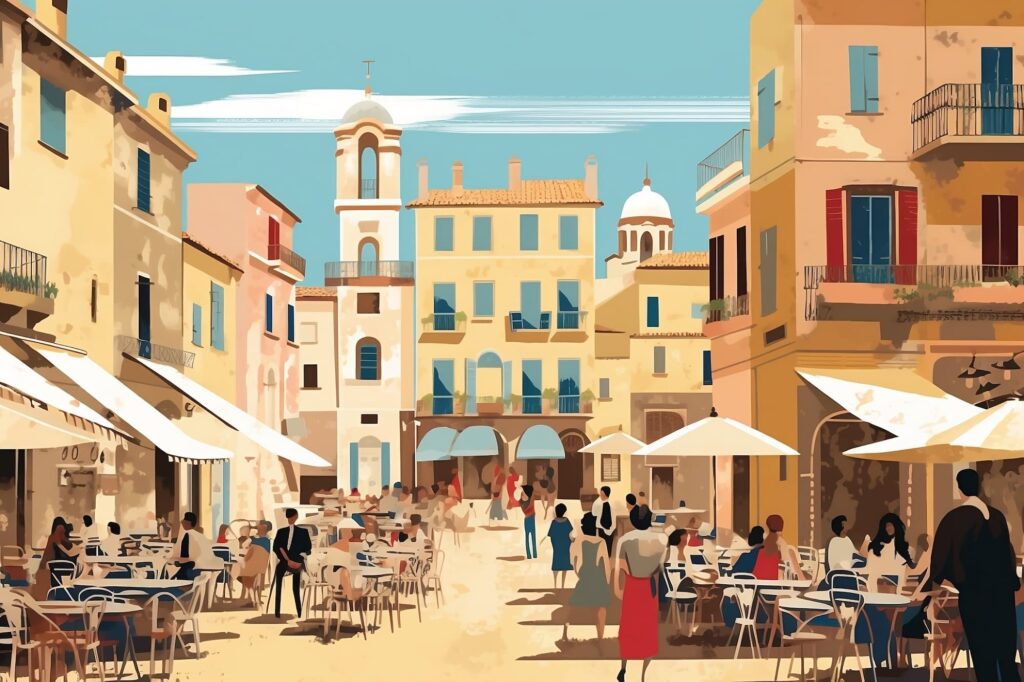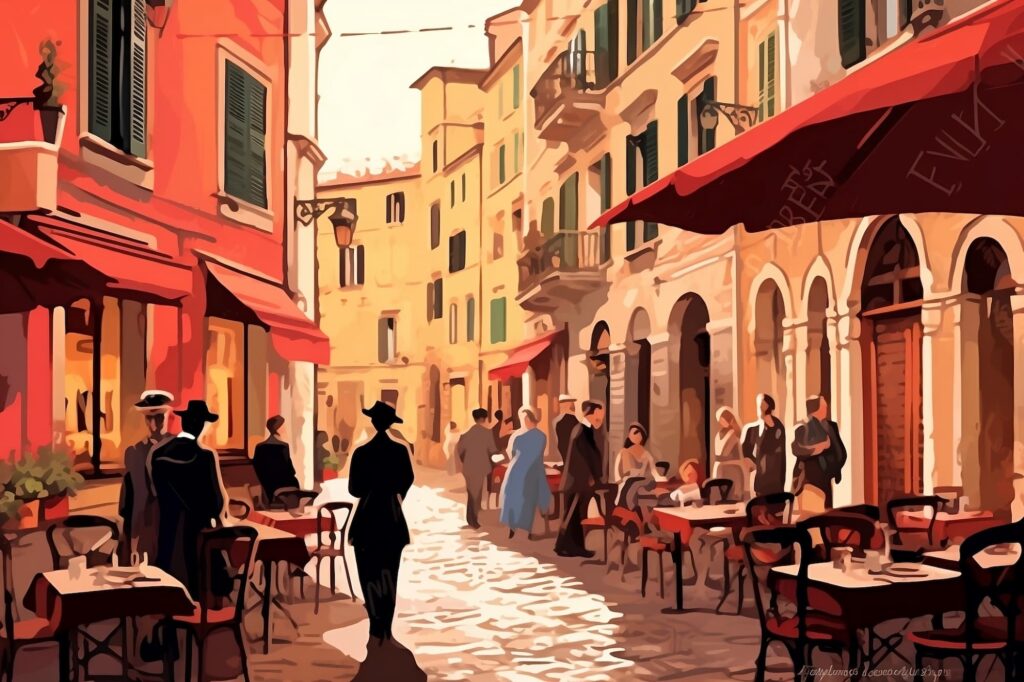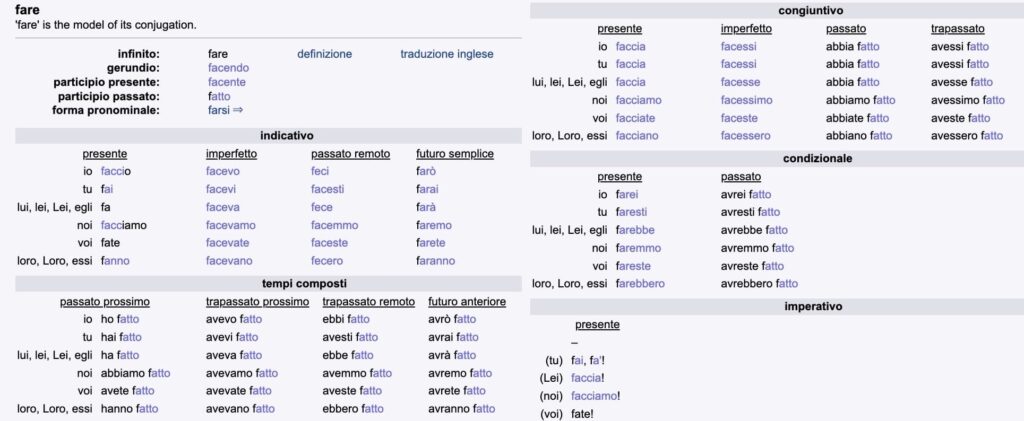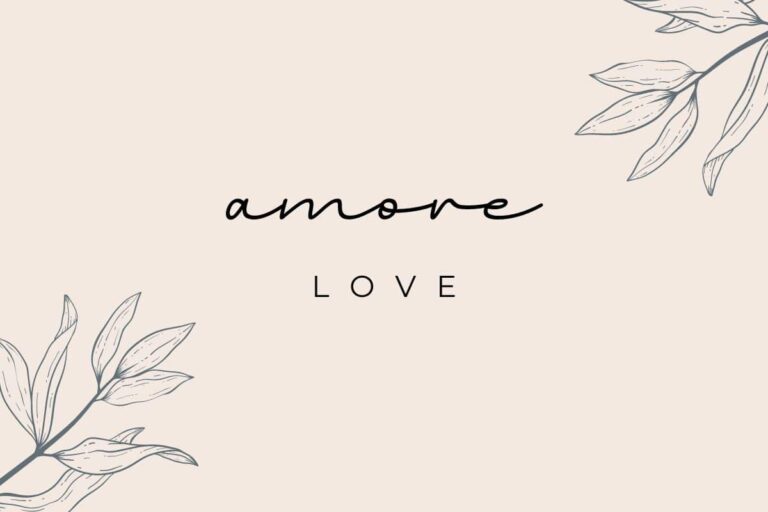How Hard is Italian for English Speakers?
Italian, the language of music, food, and romance, is one of the most fun languages to learn. It’s lively, it’s rich with character, beautiful to listen to and to speak, and it even expands beyond the spoken word and into the language of gestures. What’s not to love!
There are over 60 million speakers worldwide. It’s spoken nationally in Italy, and is also spoken by minorities elsewhere, including in the south of Switzerland.
If you’re thinking of learning Italian and wondering how hard Italian is to learn, you’ve come to the right place. Italian was my fifth language, and one we’ve worked on on-and-off for over two decades.
Given we’ve studied a number of other languages (including other European, Middle Eastern, Asian, and African ones), we’re in a good position to answer the question: How hard is Italian to learn for English speakers, really?
We’ll go over:
- Italian orthography (reading and writing
- Pronunciation of Italian words and letters
- Italian grammar
- Italian vocabulary

How Hard is Italian for English Speakers? An Overview
To consider how hard Italian is to learn, we’ll assume a baseline for most people reading this article of being English speakers. In other words, you’re most likely to be reading this in English, and use English as your base language of instruction.
In the past, you may have studied some French or Spanish in high school, which is common in English-language educational systems. But that would just give you some points of reference for Italian.
In general, there are no “easy” languages. But in the scheme of things, acknowledging that learning any language needs time and dedication, Italian is a fairly easy language to learn for English speakers.
I believe most people would be able to become reasonably confident speaking everyday intermediate Italian with dedicated instruction of three to six months. That means studying every day with a teacher and doing homework and practise afterwards.
This doesn’t mean you’d master Italian grammar, pronunciation, or reading/writing. It just means you’d feel pretty good doing most everyday things in Italian, sometimes consulting Google Translate or asking what something means.
Let’s look at how hard Italian is in more detail below.
Italian Orthography (Reading and Writing)
Let’s start with the good news: Reading and writing Italian is fairly easy. Italian is written in Roman script, which should be unsurprising, as this is where Roman script came from!
Italian not only is written in Roman script, it also has the advantage of having no unusual letters in its alphabet. German has “ß”, Spanish has “ñ”, French has ç, and Turkish and Vietnamese go much further. Italian has a few accents over some letters, but those are very few.
Italian is mostly a phonetic language. This means that it is pronounced the way it is written, with very few exceptions. This makes it relatively easy for English speakers to learn to read Italian, compared to languages like French or English itself, which have many silent letters and inconsistent pronunciation rules.
Vowels in Italian have only one pronunciation, and consonants, for the most part, are consistent. So a non-speaker, once learning the pronunciation rules, can easily pick up how to speak Italian.
There are only a few rules to learn, too. The most significant of these are how to pronounce “c” and “g”.
- Before an “e” or “i”, “c” has a “ch” sound. For example, cibo or cento. This can be negated (and changed to a “c”) with an “h”. For example, chilo or che.
- Before an a, o, or u, “c” has a hard “k” sound. For example, casa, conto, or cuore.
- The letter “g”, before an “e” or “i”, has a “j” sound. For example “gente” or “giro”. This can be negated (and changed to a hard “g” sound) with an “h”. For example, ghetto (which comes from Italian) or ghiaccio.
- The letter “g”, before an “a”, “o”, or “u”, has the hard “g” sound. For example, gatto, gola, or gusto.
There is also extra emphasis on double letters, plus a few other rules Largely, you can learn to read Italian words just by listening to it spoken and absorbing it over time.
In terms of how hard Italian is in terms of reading, it’s slightly easier than that of Spanish, and much easier than that of French.
In written Italian, there are a few accented words in common use. You should pay attention to two very common words, è (which means “is”) and e (which means “and”). In everyday Italian, I find they’re the only two words where autocorrect doesn’t exactly know what I’m saying. Otherwise, my phone or computer makes accent corrections in Italian for me.

Italian Pronunciation
So, how hard is Italian to pronounce for English speakers?
Developing a natural accent in Italian — or any language — takes a lot of time and practise. But Italian pronunciation has relatively few difficult items.
First and foremost is the trilled “r”. This one is do-or-die. Without a trilled “r”, it’s impossible to sound natural in standard urban Italian. So if you can’t trill your “r”, you need to work on it.
This doesn’t mean you have to be able to trill like an operatic soloist, or produce long “rrrrrr” sounds on demand. You just have to be able to pronounce everyday words like buongiorno and everyday phrases like Vorrei un caffè, per favore.
Things get harder with the double trilled “r” like in arrivederci. But with practise, and maybe a quiet mental warm-up before saying it (which is what I do), it’s doable for most people.
Beyond that, learning to pronounce Italian is mostly an exercise in:
- Getting used to the pronunciation of Italian vowels. It sounds “mostly like Spanish”, but different. I don’t want to get into an academic discussion of pronunciation, so I’d just encourage you to go listen to Italian and Spanish and listen to how it’s different.
- Becoming familiar with open and closed pronunciation of “o” and “e”. It’s not critical as a learner, but over time you’ll notice that sometimes each is pronounced differently, depending on the stress. (For example, the “e” in caffè and the o in però are both open.)
- Becoming familiar with where the emphasis is in each word.
The nice thing is that I find Italian pronunciation forgiving. If I pronounce a vowel closed when it should be open, or put emphasis on the wrong syllable, people still get it and move on. Everyone makes mistakes!
Italian Grammar
Italian grammar is where the rubber hits the road for a lot of people. When considering how hard Italian is, people often first think of the grammar.
The one blessing of Italian grammar is that Italian is still a subject-verb-object language, i.e. the phrase “I (subject) eat (verb) the apple (object)” are in the same order in Italian. (Don’t take that for granted; German, English’s cousin, isn’t always this!)
Italian is a “Romance” language, which means it has a lot in common with French, Spanish, Romanian, and a few other regional languages.
So Italian grammar has a number of features that are unfamiliar to English speakers, like
- Grammatical gender
- Conjugation for person, tense, and mood (e.g. conditionals)
- A non-requirement for pronouns other than for clarity or emphasis
- An explicit subjunctive mood
- New and different grammatical particles
Grammatical gender
Grammatical gender means every noun has a “female” or “positive” gender. It’s not something people think about very hard; nobody thinks a table (un tavolo) is particularly masculine, or that a house (una casa) is particularly feminine. It’s just a classifier of nouns.
Gender in Italian really only affects pronouns and adjectives. Adjectives have to agree with nouns. For example, “the house is beautiful” is la casa è bella, but “the table is beautiful” is “il tavolo è bello”.
In other languages, gender also affects verb conjugation. Thankfully, that’s not the case in Italian!
For every noun, you do have to learn the gender. If you don’t learn it, you’ll be intelligible, but people it makes the language grate on the ears to hear someone use incorrect genders or agreement in a sentence.
Verb conjugation
In Italian, like in many other languages, there’s verb conjugation that’s explicit and quite complicated to someone not expecting it.
In modern English, we only have three-four conjugations. For example, for the verb “to be”, we have just five conjugations: am, are, is, were, and was. Those five cover every possible combination of a person (I, you, they, etc.), tense, and subjunctive mood. (“Were I rich, I would buy a Ferrari.”)
In Italian, there are tons. There’s a different form for the six basic pronouns, and also a formal form: Io (“I”), tu (“you” informal), Lei (“you” formal), lui / lei (“he” / “she”), noi (“we”), voi (“you”, plural), and loro (“they”).
On top of that, there are many conjugations. There’s present (“do”), perfect past (“have done”), future (“will do”), conditional (“would do”), present subjunctive, past subjunctive, imperative, and a few other forms in regular use involving the perfect tense.
There’s also the written forms. For example, the simple past tense (“did”) is often not used in verbal Italian (other than in some regions), but is often used in print. So you have to understand it.
Here’s the verb conjugation table for fare, “to do”, from Wordreference.

You have to learn this conjugation pattern for three major verb types (are, ere, and ire, and the dozens of irregular verbs that have their own unique patterns.
Seeing the complexity of Italian grammar, I know what you’re thinking. “You should have said this first. See you later.”
But don’t despair. After a while, you don’t even think about Italian grammar. I don’t. When I want to say something, I just think of the phrase, without conjugating in my head. After a while, it becomes like breathing — the thoughts in your head just become sentences. Conjugation is just hard while you’re doing the drills, memorising the patterns. But like learning to walk, eventually it becomes totally subconscious.
By the way, because Italian conjugation is explicit and pronounced clearly, you don’t need the pronoun other than for emphasis. For example, to say “I am”, you don’t need to say *Io* sono, you can just say Sono. The Io is implied from the rest of what you’re saying.
A Quick Note on The Subjunctive
Something that strikes fear into the hearts of many a Romance language learner is the subjunctive. It’s hard to get, and it’s an extra conjugation or two. Subjunctive is one of the hardest things about Italian, too.
“What’s a subjunctive?” you cry, fearfully clutching your chest. We have it in English, but people often don’t use it in colloquial English.
Here’s the subjunctive in technical terms: A subjunctive is when you change a verb to express uncertainty or something that hasn’t happened.
In the present tense, you’d hear the subjunctive as “The doctor suggested that she rest“, rather than “she rests” (present tense). People often express this as “The doctor said she should rest.”
In the past tense, you’d use the subjunctive to say “If I were rich…”. In spoken English, people often say “If I was rich”. It’s technically incorrect, but that’s how the language is evolving.
You can avoid the subjunctive in English, but in Romance languages, it’s unavoidable.
First, the bad news. In Italian, the subjunctive used more often than in Spanish or French. In Italian, you use it for everyday phrases when the person changes. Like, “I think that the alarm clock noise is coming from that apartment” translates to Penso che il rumore della sveglia venga da quell’appartamento sopra. “Venga” is the third person present-tense subjunctive of venire.
In Spanish you’d say viene, and in French you’d say vient, both being the third person present (non-subjunctive).
Don’t throw your hands up in despair. There are two things that might make you feel better about using the subjunctive in Italian.
Firstly, there are a number of verbs that are used in the subjunctive more than any other. These are the most common verbs like essere (“to be”), andare (“to go”), potere (“to be able to”). They come up far more often than other verbs.
Secondly, you quickly learn to think in the subjunctive from context. Whenever I’m expressing an opinion or making conjecture, I start thinking subjunctive. I do that a lot, so it becomes natural!
Italian Vocabulary
Finally, let’s look at how hard Italian is from the perspective of vocabulary.
Generally speaking, everyday Italian words sometimes bear a resemblance to English words, but usually don’t. Some might be familiar because you’ve looked at Italian (or pizza) restaurant menus, or familiar because of their roots, but most are just different.
| Category | English | Italian |
|---|---|---|
| Street objects | building, pedestrian, traffic light, sign, tree, sidewalk, bench, crosswalk, office, restaurant | edificio, pedone, semaforo, segnale, panca, attraversamento pedonale, ufficio, ristorante |
| Vehicles | car, truck, motorcycle, bicycle, bus, train, airplane, boat, scooter, van | auto, camion, motocicletta, bicicletta, autobus, treno, aereo, barca, motorino, furgone |
| Fruit | apple, banana, orange, strawberry, grape, watermelon, pineapple, mango, lemon, cherry | mela, banana, arancia, fragola, uva, uva, ananas, mango, limone, ciliegia |
| Vegetables | tomato, cucumber, carrot, potato, broccoli, onion, spinach, cauliflower, bell pepper, cabbage | pomodoro, cetriolo, carota, patata, broccolo, cipolla, spinaci, cavolfiore, peperone, cavolo |
| Kitchen objects | knife, spoon, fork, plate, bowl, glass, pot, pan, cutting board, oven | coltello, cucchiaio, forchetta, piatto, ciotola, bicchiere, pentola, padella, tagliere, forno |
| Colors | red, blue, green, yellow, orange, purple, pink, brown, black, white | rosso, blu, verde, giallo, arancione, viola, rosa, marrone, nero, bianco |
| Numbers | one, two, three, four, five, six, seven, eight, nine, ten | uno, due, tre, quattro, cinque, sei, sette, otto, nove, dieci |
| Verbs | eat, run, jump, talk, sleep, walk, write, read, dance, sing | mangiare, correre, saltare, parlare, dormire, camminare, scrivere, leggere, ballare, cantare |
| Adjectives | happy, sad, big, small, tall, short, beautiful, ugly, strong, weak | felice, triste, grande, piccolo, alto, basso, bello, brutto, forte, debole |
| Professions | doctor, teacher, engineer, lawyer, nurse, architect, chef, musician, firefighter, police officer | dottore, insegnante, ingegnere, avvocato, infermiere, architetto, chef/cuoco, musicista, pompiere, poliziotto |
Have a careful look through many of the above words.
There are many words that look quite similar, like “doctor” and “dottore”. But even when they’re not similar, you can sometimes see the relationship. For example, a “building” is an “edificio”, which relates to the English word “edifice”. Or “happy” is “felice”, which you might know as being related to “felicity”, a more poetic word for happiness.
Many English words come from Latin roots (and those that don’t often have Germanic roots). So Italian vocabulary isn’t very hard to pick up as words are quite sticky.
Of course, there are many words that are just totally alien to English speakers. Many of these are everyday words used in grammar in making sentences. But at least, with the Latin roots of English vocabulary, you have a jump start on a long race.
False Friends in Italian Vocabulary
One quick note — there are many false friends in Italian vocabulary.
A “false friend” is a concept used to describe words that seem like they might mean one thing, but don’t.
Between English and Italian, some common false friends are
- To be bored: annoiarsi in Italian. Sounds like “to be annoyed” in English, which is better translated as infastidire.
- Suitable: conveniente in Italian. Sounds like “convenient”, which is better translated as comodo.
- Farm, which is fattoria in Italian. This sounds like “factory”, which is una fabbrica.
- A relative, which is parente in Italian. Sounds like a parent. The common word for parents is genitori.
The worst part of false friends it that the person you’re speaking with may not realise you meant something else, unless they’re an Italian teacher. For example, if you are going to visit the farm, you better know whether you’re saying “farm” or “factory”!
Availability of Resources to Learn Italian
Finally, it’s important to consider how available resources are for any given language.
Luckily, even though Italian is one of the smaller languages, it’s a popular one to learn. So there are plenty of books, resources, and courses that you can use to learn Italian.
The resources we’d suggest would be our usual formula for learning languages: Teachers (on italki), a flashcard deck (using Anki), and lots of practise listening and absorbing content.
There’s loads of good stuff out there to listen to or read in Italian. TV shows, movies, news resources, magazines… it just depends what you’re into.
Wrap up
Hopefully this post has been a good indicator of how hard Italian is to learn.
If you do start out on your Italian language learning journey, let us know.







Thanks for the post. I have started studying Italian. It’s easier than African languages in which I never became fluent. This is my 3rd month learning Italian on DuoLingo. I still find reading impossible. All the small words mean what? But I am proud to be able to make up sentences eg i bambino saltando sul letto. Is that right?
Haha it’s right, as long as that’s actually what’s happening… well it’s more of a sentence fragment. (“the baby jumping on the bed”) The small words — the particles — are the joinery of the language. Figuring out words like “ci” and “ne” are like figuring out “to” and “of” in English. There’s no one-to-one correlation. E.g. think of the meanings of “to” in: 1. I’m going to the office 2. It’s up to you 3. To what end? 4. It wasn’t meant to be. The particles in Italian are similar. They have a general meaning, but you need to… Read more »